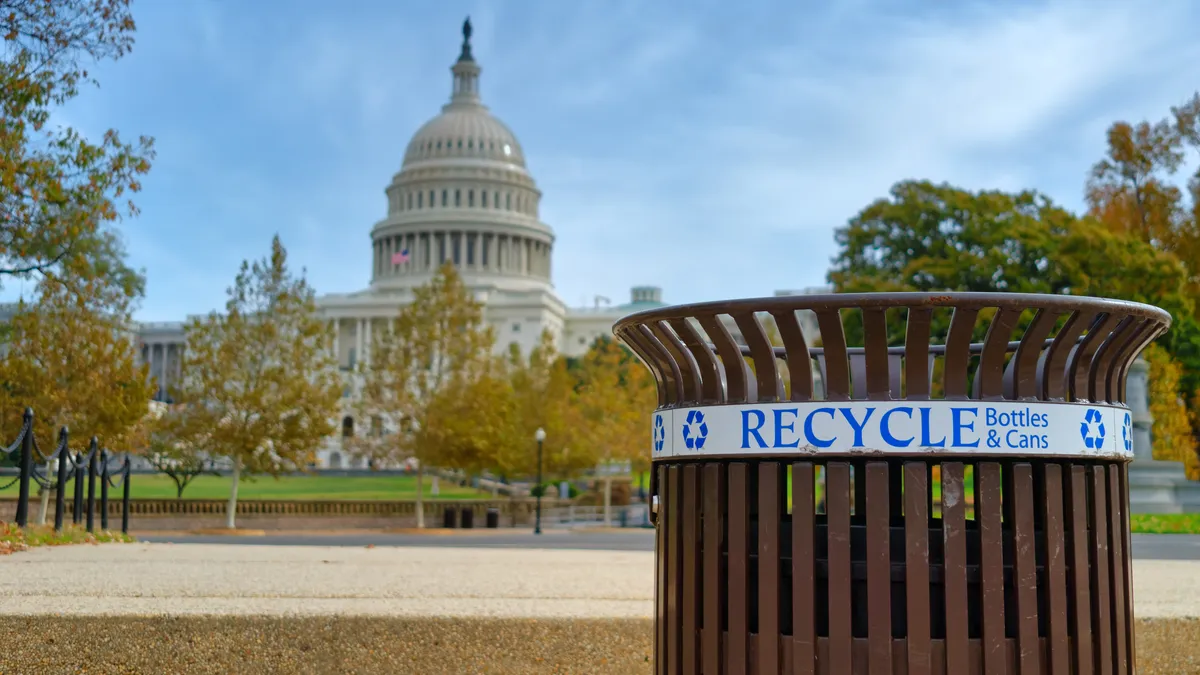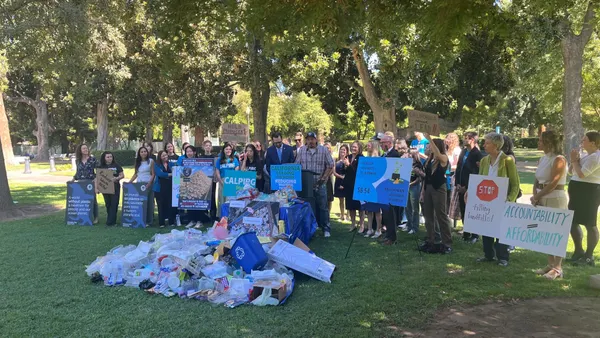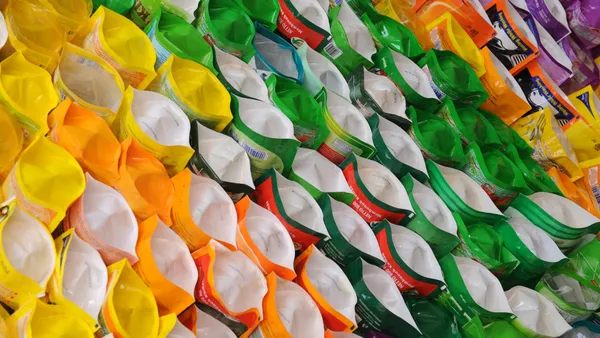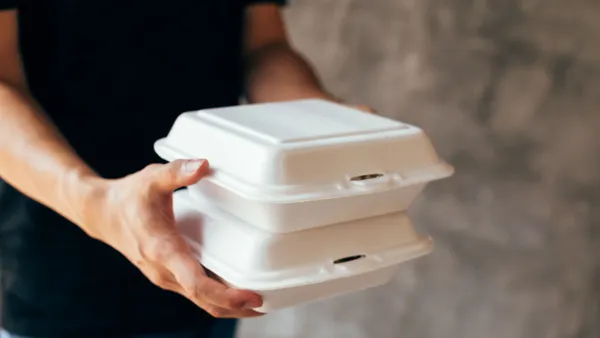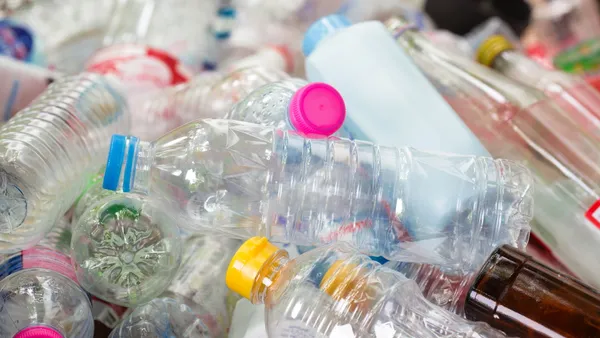Dive Brief:
- The Biden-Harris administration on Friday announced a goal to phase out federal procurement of single-use plastics from food service packaging, operations and events by 2027, and from all federal operations by 2035.
- The announcement came in tandem with the Biden-Harris administration releasing what it’s calling “the first comprehensive, government-wide strategy to target plastic pollution at production, processing, use, and disposal.” It aims to consider the entire plastic life cycle and encourages a coordinated response across all levels of government.
- The administration expects the 2027 and 2035 efforts to build on an existing push for net-zero procurement by 2050, outlined in a 2021 executive order. “Meeting the new goal by selecting reusable, compostable, and highly recyclable products in lieu of single-use plastics in food service will further agencies’ obligations,” per the White House’s announcement Friday.
Dive Insight:
The White House describes this as the first time the federal government is “formally acknowledging the severity of the plastic pollution crisis and the scale of the response that will be required to effectively confront it.” The U.S. EPA is working on its own National Strategy to Prevent Plastic Pollution that it has not yet finalized.
The strategy report was produced by the Interagency Policy Committee on Plastic Pollution and a Circular Economy. The committee, created in April 2023, is co-chaired by Brenda Mallory, the chair of the White House Council on Environmental Quality, and Ali Zaidi, a national climate advisor to the president. It engages participants from across federal agencies.
The report also outlines various actions that agencies have already taken, such as EPA’s Solid Waste Infrastructure for Recycling grants. The report acknowledges health and environmental justice harms from plastic pollution.
The report further details “opportunities for action” in slashing pollution in the plastic production process, innovating materials and product design, decreasing plastic waste generation, improving waste management and capturing and removing plastic pollution from the environment.
Among those opportunities, the report said EPA could develop recommendations for a harmonized national framework for extended producer responsibility that still allows various state and local governments to “develop approaches best for them,” with a goal to “level the playing field for producers.” The concept of federal EPR has drawn some interest this year, including as the subject of a Senate hearing in March.
Other recommendations in the report that multiple agencies could team up on include:
- Promote development of end-of-life material and performance specifications, and assess the commercial-scale recyclability of such materials.
- Determine appropriate minimum postconsumer recycled and/or bio-based content requirements for plastic products and packaging, and consider ways to decrease the amount of new plastic required.
- Analyze information about potential environmental or human health impacts of plastic additives and contaminants, including in recycled plastic.
- Support R&D, testing and standards development on the safety of reusing plastic waste and operating reuse infrastructure.
- Encourage industry-led, state-authorized and voluntary actions to reduce emissions from plastic production, including chemical additives.
Last month, the General Services Administration finalized its own rule on federal procurement of single-use plastic-free packaging, which encouraged — but did not require — federal contractors to identify such packaging, despite some calls to ban it. In June, Oceana called it “a missed opportunity.” On Friday, the nonprofit called Biden’s newly released plan a “reason to celebrate.”
This federal action also comes as the fifth gathering to negotiate a global plastics agreement approaches in November. Environmental advocates have criticized what they view as a lack of U.S. leadership in earlier negotiations and said the U.S. contingent has been too quiet on measures like caps on manufacturing plastics.
Plastics industry representatives expressed a mixed view on Friday’s strategy release.
“We agree with the White House’s ambitions to make plastic production a more circular process. A collaborative public-private approach that includes all technologies as possible solutions as well as clear federal standards and definitions can help make the United States a leader in this field,” said Ross Eisenberg, president of America’s Plastic Makers, a division of the American Chemistry Council.
But ACC took issue with the administration’s recommendation toward alternative materials, which don’t necessarily have a lower greenhouse gas emissions footprint across their life cycle, according to the group. This recommendation is out of step, ACC suggested, with language in the GSA ruling that acknowledged the plastics industry is working to better design products for recycling and to improve infrastructure.
But environmental groups, such as World Wildlife Fund, praised the move.
“As the single largest consumer in the world, the US federal government has an outsized role to play in curbing the use of problematic and unnecessary plastic products,” said Erin Simon, vice president and head of plastic waste and business at WWF. “The Administration’s commitment to removing single-use plastic products across an entity this large goes beyond the positive environmental effects, sending a message to the public and private sector across the world: if we can make change happen at scale, so can you.”







